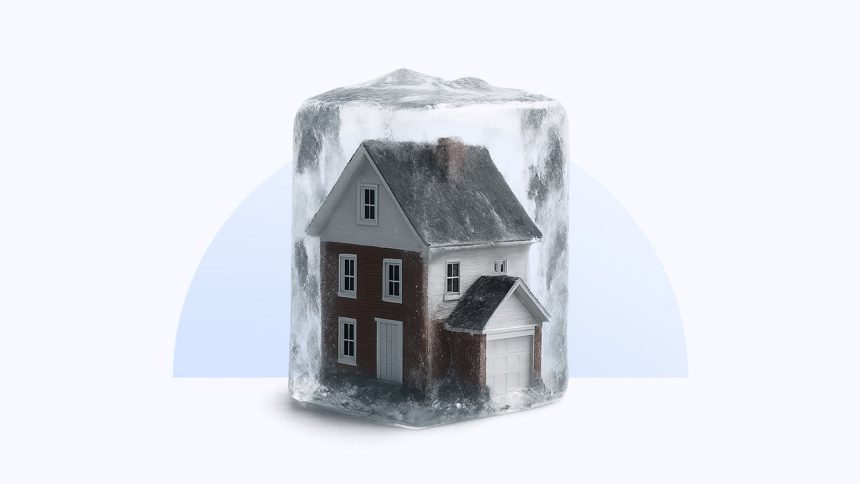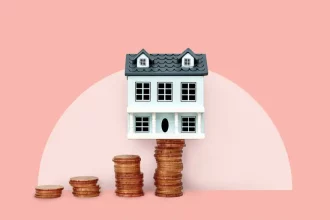U.S. home prices have been on a roll. Defying the downward pull of an affordability squeeze and elevated mortgage rates, home values keep setting records. In fact, the National Association of Realtors (NAR) just reported 24 consecutive months of year-over-year price increases.
When might this momentum finally reach its limits? Not any time soon, apparently: The median price of existing-home sales rose to $435,300 in June, an all-time record, according to NAR.
While no one expects a nationwide crash in home prices, property values have been sliding in some formerly hot markets in the Sun Belt. “We know there’s a lot of talk about excess inventory, especially in Texas and Florida,” NAR Chief Economist Lawrence Yun told reporters July 23.
The optimistic view: Slight declines, only in some markets
During a July presentation, Yun ticked off the reasons that the housing market won’t crash. They include low delinquency rates, few foreclosures and plentiful home equity. “Real estate is on very solid ground,” he said.
He drew a contrast between the lending practices of 20 years ago and those of today. “We’re not going to have 2008 conditions, thankfully, because we don’t have those shoddy, risky mortgages [anymore],” Yun said.
Real estate is on very solid ground.
— Lawrence Yun
Chief Economist, National Association of Realtors
And he’s not concerned by the trend of price declines in such formerly hot markets as Texas and Florida. His rationale: Job growth remains strong in both states, so any slump is likely to reverse, and prices “will be quickly pushed up again.”
For would-be homebuyers who have been discouraged, the downturn represents a “second chance” at buying, Yun said.
Even as formerly hot markets in the Sun Belt see modest declines, those in the Rust Belt and Northeast are experiencing increases. Add it all up, and you get a national plateau in pricing. “Half the country could be slightly negative, the other half of the country could be slightly positive,” Yun said.
And Yun disputes reports that inventory is flooding the market. The number of homes for sale has risen but remains below normal levels, he said.
The pessimistic view: Affordability, mortgage rates create headwinds
A more downbeat view of the same trends comes from Lisa Sturtevant, chief economist at Bright MLS, a large listing service in the Mid-Atlantic region.
“The U.S. housing market is in the doldrums, with sales of existing homes tracking below last year, new residential construction on the decline and home prices falling in a growing number of local markets,” Sturtevant said. “Affordability is a major constraint on homebuyers.”
Affordability is a major constraint on homebuyers.
— Lisa Sturtevant
Chief Economist, Bright MLS
With mortgage rates just below 7 percent, a homebuyer needs an income of more than $130,000 to qualify to buy the median-priced home, according to Sturtevant’s calculations. (The median price of an existing home nationally in June was $435,300, according to NAR, and the U.S. Department of Housing and Urban Development says the national median family income for 2025 is $104,200.)
Then there’s the mortgage lock-in effect — no one wants to trade a 3 percent mortgage for a home loan near 7 percent, so homeowners are staying put rather than selling.
“As home prices soften, sellers are going to be further reticent to sell because they are less likely to get the price they want for their home,” Sturtevant said. “What does this mean for the housing market in the second half of 2025? It is likely going to continue to be a slow market. Mortgage rates will remain in the mid- to high-6 percent range.”
View from a slowing market: ‘Conditions are different’
During the pandemic, Texas and Florida experienced strong population growth, robust hiring and booming home prices. But the momentum has changed, and those markets have softened markedly.
According to Zillow, Austin, Jacksonville and Miami are now officially buyer’s markets. In Miami, the company’s data shows, the typical seller now waits 62 days for an offer, compared to a national median of just 19 days.
What was happening a few years ago was not sustainable.
— Blake Blahut
Real Estate Broker in Orlando, Florida
Another Florida example is the Tampa Bay market — it’s the only one of the country’s 20 largest metro areas to consistently report year-over-year price declines on the S&P CoreLogic Case-Shiller index, including a 2.15 percent drop from April 2024 to April 2025.
Blake Blahut, broker at Realty One in Orlando, Florida, says after years of booming prices, a slowdown was inevitable. “This was poised to happen,” he said. “What was happening a few years ago was not sustainable.”
The loss of momentum means home sellers need to adjust their expectations. He advises sellers to price at 1 to 3 percent below sales that happened several months ago.
“Conditions are different than they were even six months ago,” Bahut said. “Some sellers are getting a little discouraged. You’ll have periods where you don’t get a showing for a week or two.”
How sellers can cope with a softer market
During the recent boom, home sellers didn’t have to do much but hire an agent, list the home for sale and wait for the offers to pour in. Now, things are more challenging. Agents from real estate brokerage Coldwell Banker offer the following suggestions for making your listing stand out:
Why would you just sit around and wait? Why not be proactive?
— Jason Waugh
President, Coldwell Banker Affiliates
- Make the first move: Aggressive sellers are taking matters into their own hands with “reverse offers” to potential buyers — essentially opening the negotiations by citing a number. “Why would you just sit around and wait?” says Jason Waugh, president of Coldwell Banker Affiliates. “If somebody has visited the property several times, they’re obviously interested. Rather than being reactive to the market, why not be proactive?” There’s no hard-and-fast rule for when to make a reverse offer, or how much to take off the list price, he said: “It’s a tactic that’s very situational.”
- Get active: Consider hiring a listing agent who understands that yard signs, mailers and open houses aren’t enough in a slow market. A slowdown calls for more assertive tactics, such as door-knocking and talking to neighbors.
- Invest in cosmetic improvements: Fresh paint, updated lighting and new fixtures can help your home show better, both online and in person.
- Price realistically: If you’re in a region where prices are soft, consider getting a home appraisal before you list. This can stave off a situation where you get no offers, or a deal that’s thrown off track by a lowball appraisal on behalf of the buyer.
Bottom line
Home prices already are falling in some markets, particularly in the Sun Belt. However, they are still rising overall, and no one expects a national crash. On the whole, prices are not expected to decline significantly anytime soon. If you need to sell while prices are still high in your area, be proactive with your home’s pricing and marketing to find success in a soft market.
Why we ask for feedback
Your feedback helps us improve our content and services. It takes less than a minute to
complete.
Your responses are anonymous and will only be used for improving our website.
Help us improve our content
Read the full article here
















